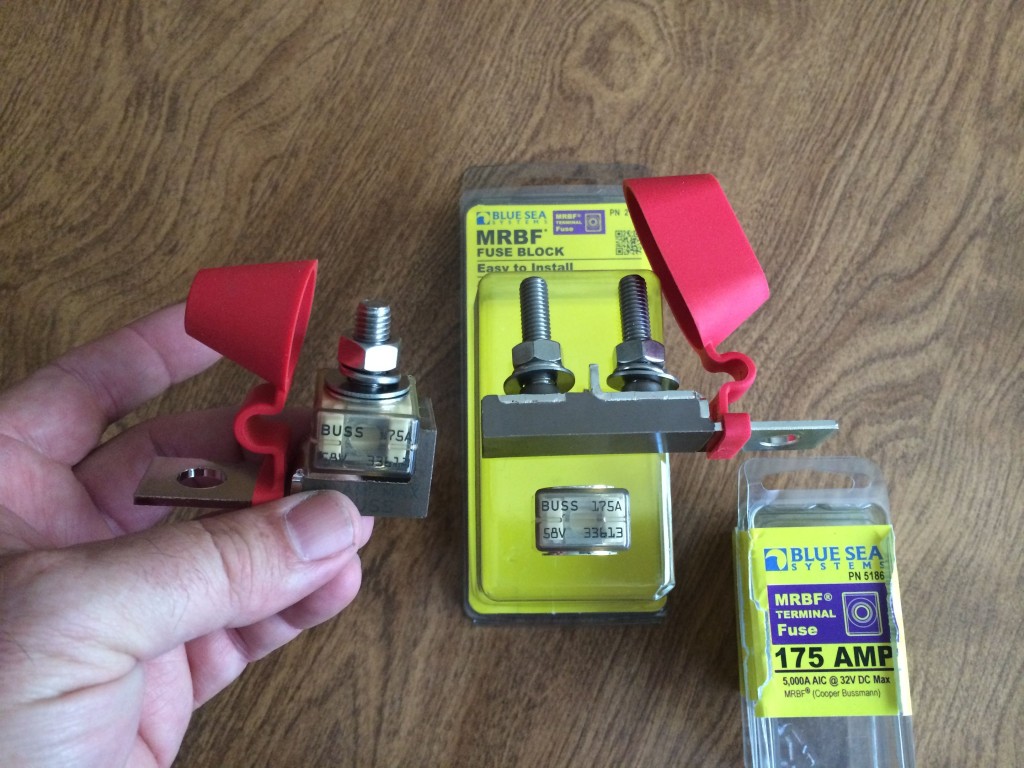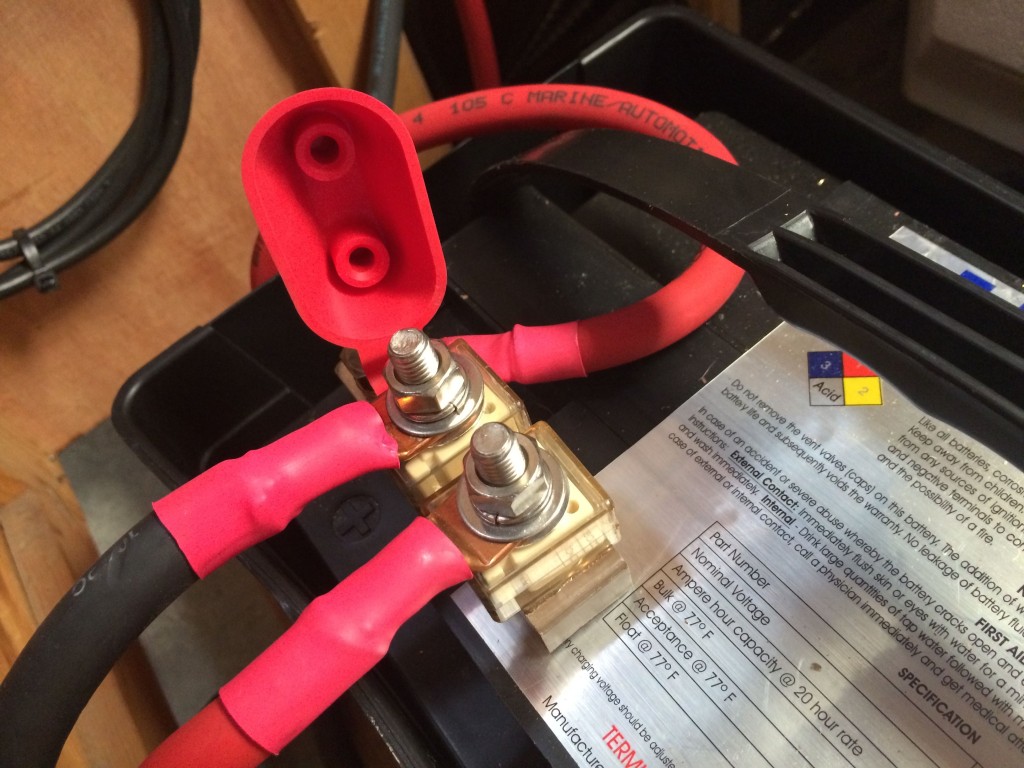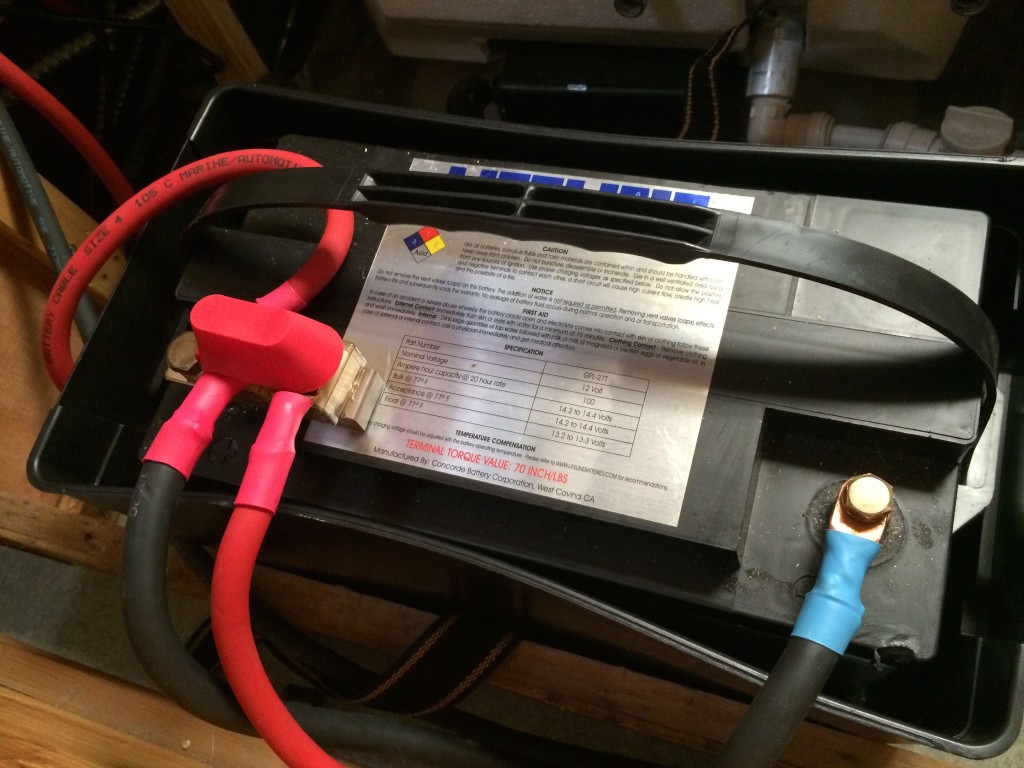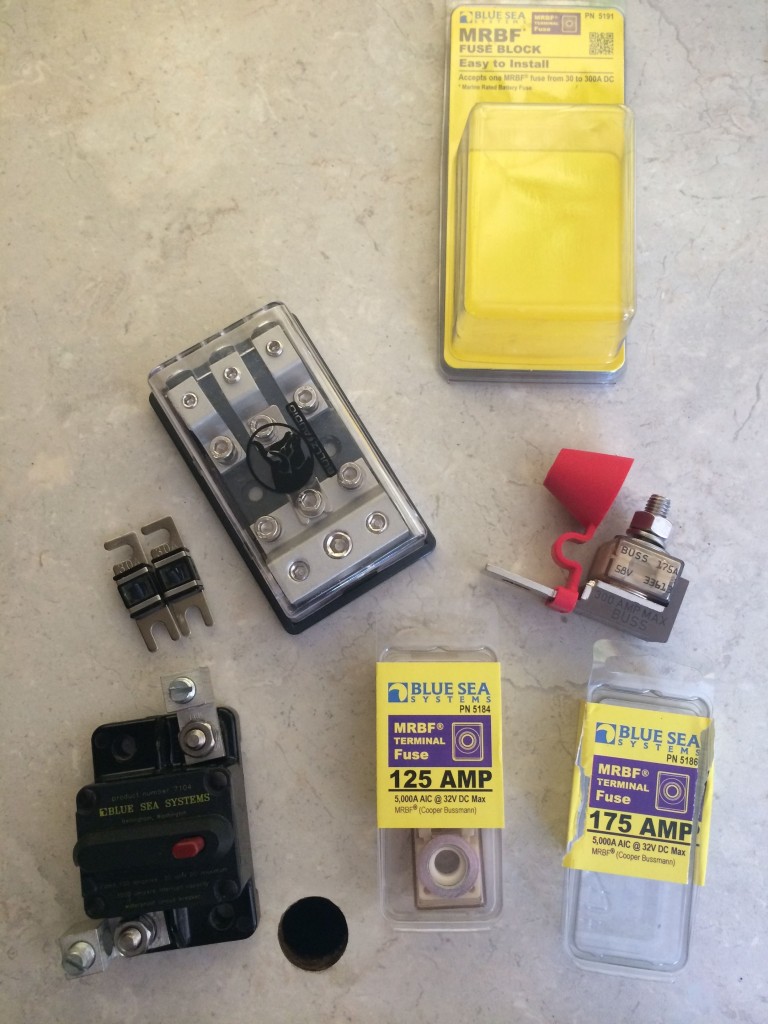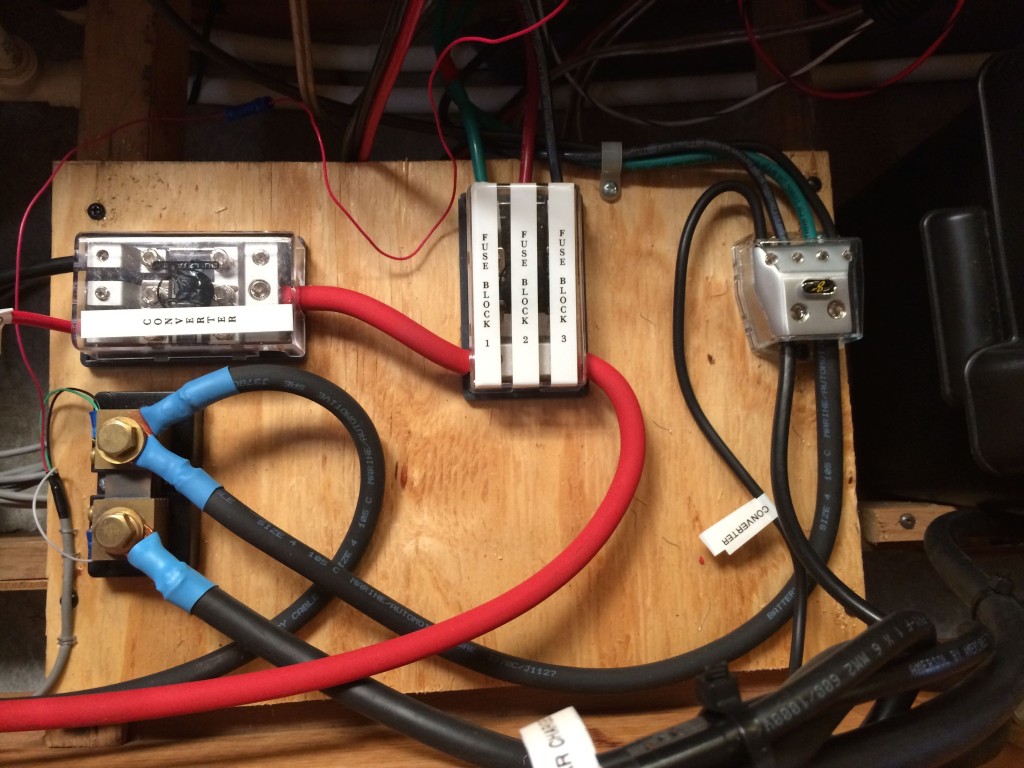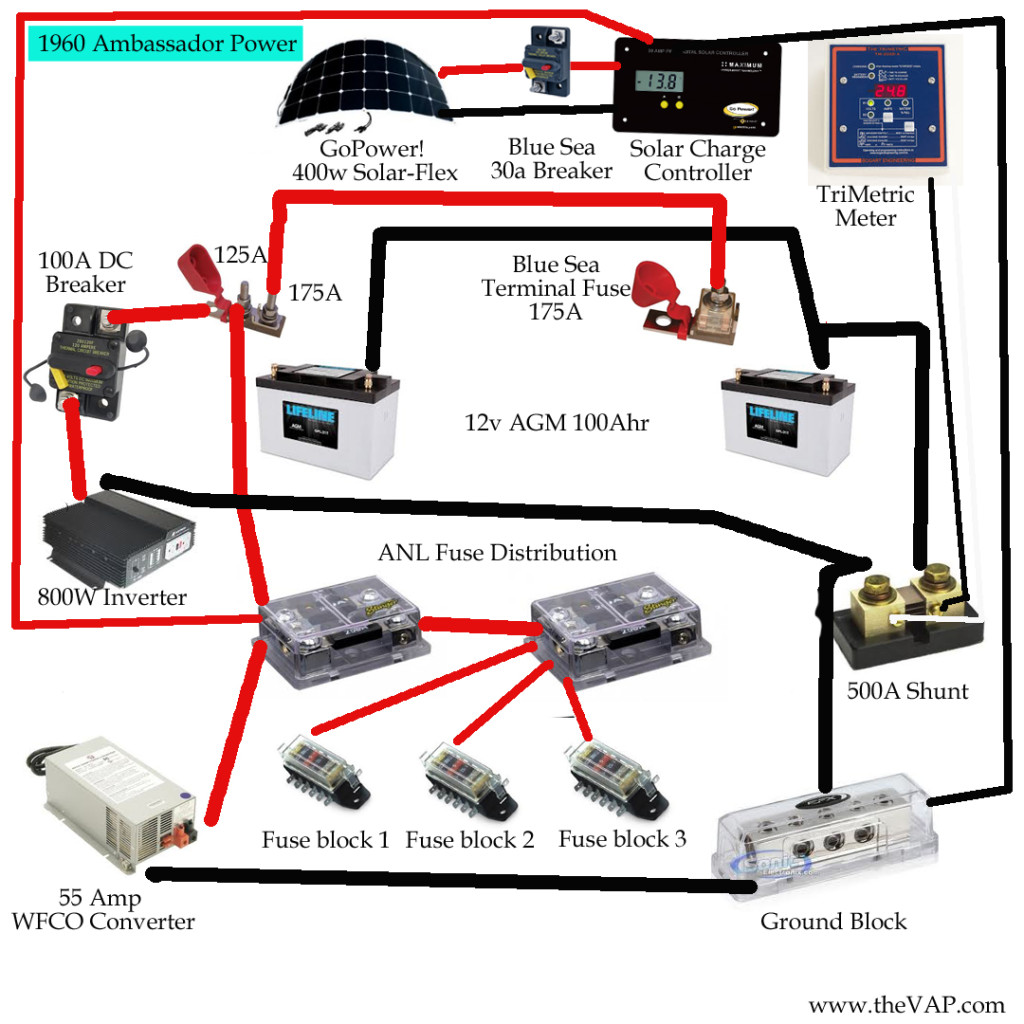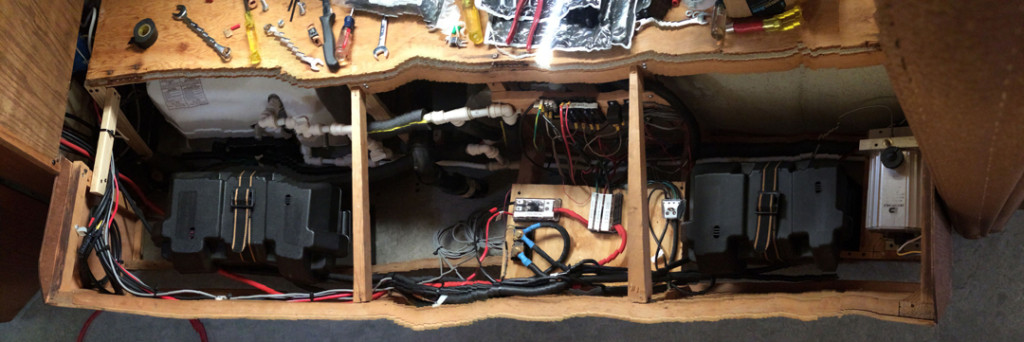My fuse distribution is a bit unusual I admit it. I guess I’m a bit over protective by nature. My trailer originally had two glass fuses serving the entire trailer. During my restoration, I replaced the glass fuse holder with a standard ATC fuse holder and used the original wiring to power the lights, and charge line from the tow vehicle.
I also added two additional fuse blocks under each bed for powering new devices that I installed. I ended up with somewhat of a distributed fuse box system and it has worked well for the past five years.
With this latest power rewire, I moved the batteries near each other, increased the cable size, and wired for a balanced load. I ended up with 1/0 wire bridging the batteries. There’s something about having heavy 1/0 wire leaving the battery box unprotected by a fuse that doesn’t sit well with me. I know the standard is 18″ from the battery box before the first fuse is OK, but my batteries were only five cable/feet apart. I wanted a better solution, and I think I found one.
Enter the Blue Sea Terminal fuses. These heavy-duty fuse holders mount right on the battery post. They have up to 300a fuses available that attach right to the post. Your cable affixes to the post before it leaves the battery box.
You may notice these come in single and dual fuse holders. I opted for a 175a “catastrophic” fuse on each battery post, and a 125a fuse for the trailer DC source.
The nice thing is the battery box lid fits perfectly. It’s a very sturdy and clean install.
The #4 wire leaving the top of the post, bypassing the fuse, is for the 800w inverter. It’s only going about 8″ to a Blue Sea 100a DC breaker that leads to the inverter. The breaker is mounted to the side of the battery box.
Here is a photo of the rest of the fuse products that I used.
The black device in the lower left corner is the DC breaker for the inverter. The box on the top is the fuse holder for the ANL fuses to the left of it. These are pretty common fuse types that will allow for more power to flow w/o a voltage drop. I used these to distribute power to my three existing fuse blocks that are scattered about the Airstream.
In a similar fashion I used a ground block to distribute the ground from the battery bank after it made it’s way through the 500a shunt that feeds the Trimetric battery monitor.
I’m one label short of a good time. There should be label above the converter that is marked solar, for the solar charge input. All fuses, save the converter, are 30amp. The converter fuse is 60amp. All the power goes through the shunt so the Trimetric can monitor the power in and out of the system.
Here is a drawing the may or may not help. It’s a little crazy, but it represents what I have going on.
The 30a Blue Sea breaker coming off of the solar panels is really just a service disconnect. It’s handy when you need to service the controller and its daylight. You want to make sure you never short out the solar wires during daylight, because you can damage the panels. To be more accurate, the breaker should be on the roof where the panel wires combine together. But that’s not practical in my situation. So for me, it just becomes a service disconnect. I don’t actually have it wired in yet, I just ordered one….
This is the prettiest that I could make it. Tie wraps sure work wonders!
It was a major redo of the power system for sure. I feel pretty good that its a nice upgrade and will service us better in the long run.
Blue Sea Terminal Fuse holder on Amazon

